Terril J. Hebert reviews the Smith & Wesson Model 638 Revolver in 38 Special +P .
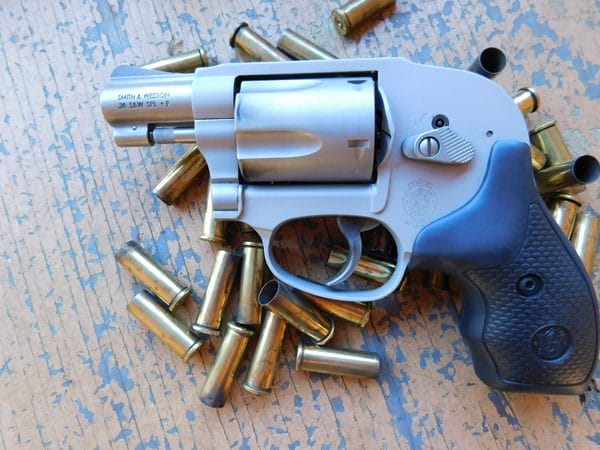
USA -(Ammoland.com)- I admit being a bit of a traditionalist when it comes to concealed-carry revolvers. I like them with slim grips, fixed sights, and exposed hammers. Why? I couldn’t possibly answer that.
But I am a person of changing tastes. Glock pistols have grown on me given how oddly shaped their subsequent imitators have become. In revolvers, the ugly duckling for me must be Smith & Wesson’s shrouded hammer revolvers. And in these changing times it has grown on me a bit.
Stuck between traditional exposed hammer guns and enclosed “hammerless” designs, shrouded hammer guns were desirable long before Smith & Wesson made it a production reality with their “Bodyguard” revolvers in the late 1950s. These five-shot small-framed 38 Special handguns were later called the Model 38 and 49, depending on an alloy or steel frame, respectively. These guns featured a shroud built up over the hammer that stops it from snagging on the draw or in the pocket, but the hammer is exposed enough to be grasped and cocked for a single-action shot.
Today Smith & Wesson is still producing their shrouded hammer revolvers, the Smith & Wesson Model 638 Revolver and the 649, the designations changed to signal the use of stainless steel in their construction. While the all-steel 649 is out there, I have been seeing quite a few alloy-framed 638 revolvers on the shelves lately, so I went ahead and got one to put through its paces.
Smith & Wesson Model 638 Revolver, the Ugliest Cousin
In Smith & Wesson’s line up of alloy framed snubbies, the S&W 638 is a bit odd looking compared to the charming and traditional 637 or the classic and popular hammerless 642. I have heard them referred to as “humpback 38s”.
At its heart, the 638 is still a five-shot J-frame revolver that features an all-stainless steel construction, except for the frame itself, which is aluminum. Fully loaded, the 638 clocks in at 15.5 ounces.
The gun comes equipped with a pair of rubber boot grips and the same 1 7/8 inch barrel found on other snubbie S&W revolvers and like the others, it is rated for 38 Special +P ammunition. The sights consist of a basic front ramp and rear notch milled in the top strap of the receiver. It also has the keylock above the cylinder release that is featured on most Smith & Wesson revolvers today.
The real elephant in the room is the hammer assembly, which is a straight knurled bar barely projecting from the top of the gun. It is enclosed on both sides by the aluminum frame.
The primary benefit of selecting the 638 would be the single-action capability as the gun can be fired by cocking the hammer and pulling the trigger or simply by pulling the trigger in double action. You get this while retaining some of the snag-free characteristics of the popular Model 642 and other double-action-only revolvers.
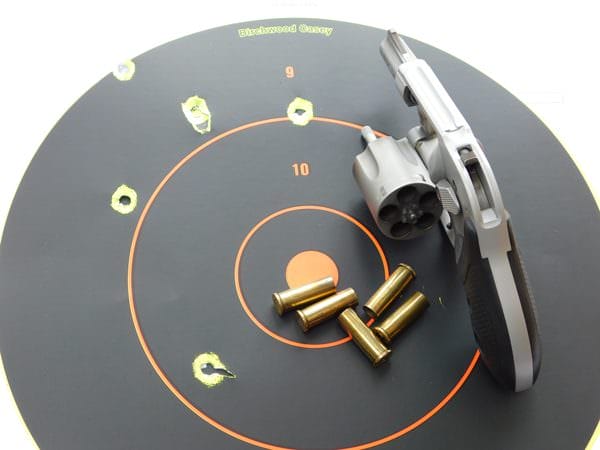
On The Range Again and Again
The Smith & Wesson 638 brand new out of the box had no perceived wear and no sharp edges. The bead blasted matte finish gives the 638 an utilitarian look. The trigger pull is fairly heavy in double-action with the trigger breaking at just under ten pounds. The single-action trigger pull breaks at just over three.
On the range, I blew through over three hundred rounds through the pistol with most of it consisting of standard pressure loads though a few boxes of +P were also expended.
Loading the 638 is simple by pressing the cylinder release forward and popping the cylinder out to the side. Slide in your loose ammunition and close the cylinder. Easy.
I started by shooting some standard pressure 158 grain LAX full-metal-jacket ammunition on a series of small bullseyes at seven yards. I lined the sights on the target and pulled the trigger. The hammer raised then fell and the gun jolted up in my hand. A stream of light radiated through the center of my target hole. I kept firing, missing the intended target every other time but stacking the remaining four rounds into a respectable three-inch group. I unloaded the gun by pressing the release again, popping out the cylinder, and thumbing the ejector rod.
These, and the other standard pressure load of choice, Blazer Brass 125 grain FMJ ejected easily in this manner. I also tried Hornady’s Critical Defense 110 grain FTX rounds and the rounds favored a little low, but the group remained the same. Recoil with the standard pressure loads is tame, though the pistol is jumpy in the hand. It wasn’t difficult to get back on target and after extended firing, I felt more heat off the gun than actual pain from recoil.
However, most people today are loading their 38s with +P or higher-pressure ammunition. I opted to try some low-tech varieties, Winchester White Box 125 grain hollow-points and Remington 158 grain lead hollow-points.
Recoil with those loads was more severe. The back of the grip started to jar the web of my shooting hand enough to hurt after about ten rounds of the Remington fodder, but it took about thirty rounds of the Winchester 125s to get the same effect.
The +P ammunition may be an issue for the more recoil sensitive or infirm shooters.
The higher pressures involved made the cartridges stick in the chambers and thus required a sharp, smack of the ejector rod to clear the gun. None of this should come as a surprise with very lightweight guns, but what did come as a surprise was the consistent accuracy amongst the different loadings. Firing double action and semi-rapidly, I could get all rounds in a three-inch group with ease, perhaps a shade more, at seven yards.
Things weren’t too difficult at twenty-five yards. Despite that the grips, that only allowed me a two-fingered grip, I was able to hold steady and post consistent six to seven-inch groups at that distance. All these groups may be improved by firing the gun in single action, but that didn’t help me at all. Thumbing back the hammer on the 638 isn’t as easy as on a standard revolver.
It is mostly hidden, denying your thumb leverage. I found myself relying on the aggressive knurling on the hammer to allow me to drag it back for some single-action shooting. The trigger is light, perhaps too light. In any case, I found myself pulling enough shots to make my single action and double action groups almost identical.
Reliability through the test was one-hundred percent, even when firing the pistol through a coat pocket. Drawing from a coat or jeans pocket was easy and the gun blends in well with a minimal holster investment. [ a pocket holster that covers the trigger would be required for EDC (every day carry)]
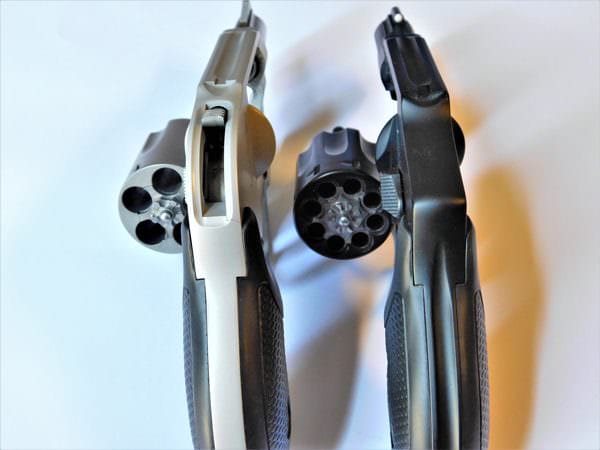
A Few Dings
The one hitch I encountered during testing involved speed reloading. Conventional HKS and Safariland speedloaders became wedged against the grip panel as the loader is pushed into the cylinder. This is not an issue of the gun but the stock factory grips. Instead of changing out the grips for greater clearance, I took off the grips and shimmed down the area of contact with a Dremel.
I found myself wishing the 638 had the same grips as the new “bodyguard” revolver that don’t seem to have that issue. There are also a few small considerations to think about if you choose the 638.
While some might worry about pocket lint getting into the hammer channel, hindering function, this is a remote possibility that is eliminated by attention to detail and a quality pocket holster. What is a valid consideration is the difficulty of de-cocking the gun.
Cocking a Smith & Wesson Model 638 Revolver is a little tough because there isn’t much to grab onto, but if you find yourself with a cocked revolver and it needs to be made safe. I found putting most of my thumb forward of the hammer as I ease it down to work every time without the hand slipping.
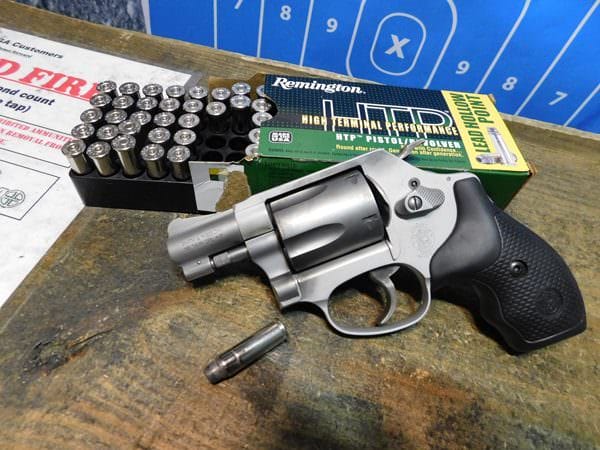
A Good Concealed Carry Option?
Even with those caveats, there isn’t an ill feature that could keep me from recommending the Model 638 for concealed carry. Though I think the grips need some work, they worked great with speed strip loaders and they do provide a good forward purchase on the gun. Recoil with good +P ammunition is just tolerable enough, though a good standard pressure load would be the ticket conductive to good practice with some recoil mitigation.
Though I was unable to take advantage of the gun’s single action capability, I can see it being useful when getting used to the gun right after purchase and practicing for longer-range shots, though it is unlikely to play out in real life. The Smith & Wesson Model 638 Revolver excels at contact distance and close range and I found the gun easy to work with. I didn’t feel at a particular disadvantage accuracy-wise, even at twenty-five yards.
Though the exposed hammer 637 is still my favorite small revolver, the Model 638 revolver makes for a far better carry gun while still having a little extra versatility that the hammerless guns don’t have. So with the Smith & Wesson Model 638 revolver, you can have your cake and eat it too, calories be damned.
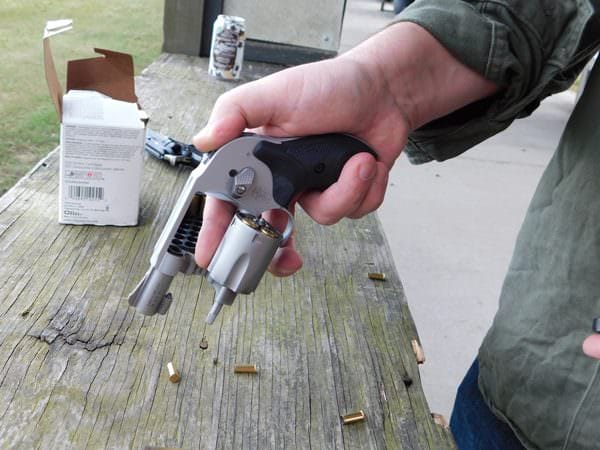
About Terril Hebert:
Terril Hebert is a firearm writer native to south Louisiana. Under his motto—Guns, Never Politics—he tackles firearm and reloading topics both in print and on his Mark3smle YouTube channel, where he got his start. He has a soft spot for ballistics testing, pocket pistols, and French rifles. When he is not burning ammo, he is indulging his unhealthy wildlife photography obsession or working on his latest novel. Scourge of God was published in 2017.”

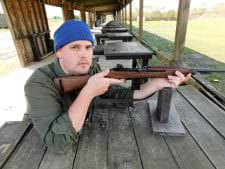
It appears that a 637 retrofitted with a 649 hammer would be the best option for those concerned about snag resistance and ease of safely lowering the hammer from a cocked position.
Dry firing will solve accuracy issues. They are not the easiest guns to shoot well, so I personally don’t recommend them for new shooters, they’re also fairly slow to reload and don’t carry many rounds, so you’ll have to be willing to adapt and improvise if you find yourself having to use it. That said, I own a 637 that I’ve carried for four years after numerous semi automatics didn’t work for me one way or another. Some malfunctioned, some broke, some were too blocky; the airweight, though wide on paper, has rounded edges, including the cylinder which is the… Read more »
I have an old BodyGuard AirWeight, two-tone, like the one in the famous UPI picture of the South Vietnamese Police Chief justifiably executing point blank the scumbag Viet Gong Guerrilla who had just murdered his family. This revolver has served me well for decades. Thankfully never drawn in defense, or offense, it’s been a fun plinker/trainer. It has also taken many grouse encountered on mountain bike rides during fall hunting season using CCI birdshot and later better #8 shot handloads. I long ago put on a Pachmeyer rubber grip which makes it slightly harder to conceal but much more manageable… Read more »
This is gonna be my next purchase!
The author writes an excellent review of the 638 “Humpback”. I own examples of both the 638 and the hammerless 642. I like the single-action trigger pull and feel, but I am concerned with the ability to decock the 638 while loaded. My normal practice with revolvers (right or wrong) is to retain the hammer with my thumb while decocking and obviously, point the gun in a safe direction. The minimal thumb purchase on the hammer of the 638 is the reason for my concern. I tend to prefer the 642 design without the single-action option. I prefer the grip… Read more »
I carried a S. & W. model # 649 for many years – I see that its just an older version of the same revolver, which cannot shoot + Ps.
I never realized that a decocking problem of any kind could exist .